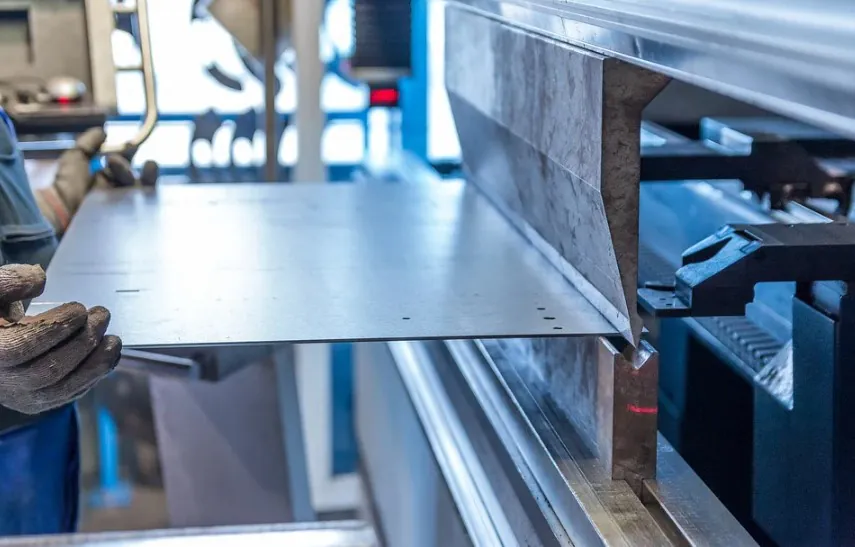The global steel industry continues to grow with a strong and steady pace, mainly driven by the rapid development of industrialization and urbanization around the world, while the world’s top 10 largest steel companies are expected to further increase their market share and generate higher revenues through 2020. Due to its unique combination of strength, formability and versatility, steel has been widely used in various of industries such as construction, infrastructure, transportation, machinery, electrical appliances etc, thus becoming one of the most vital materials for any economic growth around the globe. The new trend in the global steel market will see the rising demand for steel and steel products that are stronger, lighter and meet environmental standards. In return, this trend is also expected to boost the growth of the global steel industry in the near future.
This industry fact sheet is to assist industry professionals, investors, and people in general that are interested in gaining insights into the global steel and steel products industry including:
- How much is the global steel market worth?
- What is the latest world steel production?
- What are the key factors driving the steel market growth?
- Who are the top 10 steel producers in the world?
- Who is the largest steel company in the world?
- What are the steel industry trends for future?
Bizvibe’s smart B2B marketplace solutions help buyers and suppliers in the global steel industry to find and connect with each other, shorten sourcing and purchasing cycles, and maximise profit growth. Join today to see how BizVibe can help your business grow!
Global Steel Industry Figures and Facts 2020
- Global crude steel production reached 1.87 billion tons in 2019, increased by 3.4% compared to 2018. The global crude steel production is expected to reach almost 1.9 billion metric tons by 2021.
- Asia produced 1,341.6 million tons (mt) of crude steel in 2019, an increase of 5.7% compared to 2018. Some of the largest steel producers in Asia include China (996.3mt), India (111.2 mt), Japan (99.3 mt), and South Korea (71.4 mt).
- China is the world’s largest steel producer, its crude steel production in 2019 reached 996.3 mt, up by 8.3% on 2018. China’s share of global crude steel production increased from 50.9% in 2018 to 53.3% in 2019.
- The EU produced 159.4 Mt of crude steel in 2019, a decrease of 4.9% compared to 2018. Some of the largest steel producers in the EU include Germany (39.7 mt), Italy (23.2 mt), France (14.5 mt) and Spain (13.6 mt).
- North America’s crude steel production totalled 120 mt in 2019, decreased by 0.8% from 2018. The US produced 87.9 mt of crude steel in 2019, up by 1.5% from a year ago.
- The Middle East produced 45.3 Mt of crude steel in 2019, an increase of 19.2% on 2018.
- Building and infrastructure is the largest end-user sector for steel, representing over 51% of the world steel production. Followed by automotive and transport (17%), mechanical equipment (15%), metal products (11%), electrical equipment (3%) and domestic appliances (3%).
- The global steel market size is expected to reach US$1.01 trillion by 2025, registering a CAGR of 2.6% over the next five years.
- ArcelorMittal S.A., headquartered in Luxembourg, is currently the world’s largest steel company with over 96.5 million tons of steel produced every year.
Source: World Steel Association
Top 10 Largest Steel Producing Countries in the World 2020
| Rank | Country | 2019 Production (million tons) | Share of the world (%) |
| 1 | China | 996.3 | 53.3% |
| 2 | India | 111.2 | 5.9% |
| 3 | Japan | 99.3 | 5.3% |
| 4 | US | 87.9 | 4.7% |
| 5 | Russia | 71.6 | 3.8% |
| 6 | South Korea | 71.4 | 3.8% |
| 7 | Germany | 39.7 | 2.1% |
| 8 | Turkey | 33.7 | 1.8% |
| 9 | Brazil | 32.2 | 1.7% |
| 10 | Iran | 31.9 | 1.6% |
China has long been leading the way of the world’s top 10 largest steel producing countries. China’s crude steel production in 2019 reached 996.3 Mt, representing over 53.3% of the world’s total crude steel production. China is also the largest steel consumer in the world, due to its booming downstream sectors such as vehicle manufacturing, construction materials, and consumer electronics. India’s crude steel production for 2019 was 111.2 Mt, ranked as the second largest steel producer in the world. Japan produced 99.3 Mt in 2019, making it one of the top three largest steel producers in the world. Other world’s top 10 steel producing countries include the US, Russia, South Korea, Germany, Turkey, Brazil, and Iran.
Top 10 Largest Steel Companies in the World 2020
| Rank | Company | Country | Annual Steel Production (million tons) |
| 1 | ArcelorMittal | Luxembourg | 96.5 |
| 2 | China Baowu Group | China | 67.5 |
| 3 | Nippon Steel Corporation | Japan | 49.3 |
| 4 | HBIS Group | China | 46.9 |
| 5 | POSCO | South Korea | 42.9 |
| 6 | Shagang Group | China | 40.7 |
| 7 | Ansteel Group | China | 37.4 |
| 8 | JFE Steel Corporation | Japan | 29.2 |
| 9 | Jianlong Group | China | 27.9 |
| 10 | Shougang Group | China | 27.4 |
ArcelorMittal
The Luxembourg-based steel maker ArcelorMittal is currently the world’s largest steel company with over 96.5 million tons of steel produced every year, representing about 5.2% of the world’ total steel production. It was formed in 2006 the merger of Arcelor by Indian-owned Mittal Steel. Today, it has over 209,000 employees with operations in over 60 countries around the world. In 2019, ArcelorMittal’s revenue totalled US$71 million.
China Baowu Group
China Baowu Steel Group Corp is a state-owned iron and steel company headquartered in Shanghai, China. It is now one of the largest steel companies in the world. Its produces steel products such as special steel, stainless steel, carbon steel and exports to more than 40 countries. It is also one of the top steel suppliers in the world for industries like automobile, petrochemical, nuclear power, household appliances, metalwork, energy, manufacture of machinery, electronic instruments and astronautics.
Nippon Steel Corporation
Headquartered Tokyo, Japan, Nippon Steel Corporation is the world’s third largest steel manufacturer by volume. The Company mainly produces and sells steel plates, steel pipes, structural steel, and other metal and chemical products to industries like construction, automobiles, civil engineering, energy, resources and railways in Japan and around the world.
HBIS Group
HBIS, known as Hesteel Group Company Limited, is a leading Chinese state-owned iron and steel manufacturing group based in Hebei, China. The Company produces cold rolled plates, high strength steel bars, steel pipes, and special steel products. HBIS Group is one of the top 10 steel companies in the world and the second largest steel manufacturer in China. Its products are widely used in construction, automobile, coal, machinery, electricity, transportation and household appliances in over than 150 countries and regions.
POSCO
POSCO is South Korea’s largest steel-making company headquartered in Pohang, South Korea. The company has two integrated steel mills in South Korea, it also operates a joint venture with U.S. Steel, USS-POSCO, which is located in California, United States. POSCO now produces over 42 million tons of crude steel a year and has grown to become a global business with production and sales in 53 countries in the world.
Shagang Group
Shagang Group is one of the largest private steel and iron enterprises in China, and its headquarters is located in Zhangjiagang City, Jiangsu Province. Shagang Group currently possesses total assets of RMB150 billion and more than 30,000 employees. Its annual production capacity is 31.9 million tons of iron, 40 million tons of steel and 37.2 million tons of rolled products, making it one of the world’s largest steel companies by volume.
Ansteel Group
Anshan Iron and Steel Group Corporation (Ansteel Group in short) is a Chinese state-owned steel company headquartered in Anshan, Liaoning. Ansteel Group Corporation is currently the largest rail and ship plate manufacturer in China, the largest vanadium producer in the world and the largest titanium raw material and important titanium dioxide production base in China. The products of Ansteel are sold to more than 60 countries and regions around the world.
JFE Steel Corporation
JFE Steel is the second largest Japanese steel manufacturer based in Tokyo. The company was formed in 2002 through the merger of the two leading Japanese steel manufacturing business, Kawasaki Steel and NKK. Its main products include steel sheets, plates, shapes, pipes and tubes, stainless and specialty steels, electrical steels, bars and wire rods, and iron powders. The company also operates several overseas subsidiaries, including California Steel in the United States, Fujian Sino-Japan Metal in China, and Minas da Serra Geral in Brazil.
Jianlong Group
Jianlong Steel is one of the largest private-owned steel manufacturers in China. Jianlong Steel is a subsidiary of China’s large domestic private enterprise Beijing Jianlong Group, which is engaged in resource exploitation, iron and steel production, shipping, shipbuilding and electrical machinery. With nearly 28 million tons of steel produced every year, Jianlong Group is one of the largest steel companies in the world.
Shougang Group
Shougang Group is a Chinese state-owned steel company, based in Beijing, it is one of the oldest steel manufacturing businesses in China established in 1919. The Company produces steel coils, cold rolled steel coils, electrical steels, medium plates, and long steel plates. Shougang Group also conducts minerals, city infrastructure, real estate, and financial businesses.
Global Steel Industry Trends for Future
One of the latest trends being observed in the global steel market is the rising demand for steel in the renewable energy industry. Steel has been increasingly applied in developing infrastructure for the generation of electricity from renewable energy such as solar, tidal, and wind energy. The renewable energy facilities made by steel will enable the constructions to be stronger, taller, and lighter, which will increase their productivity as well as reduce carbon emissions associated with their construction. As the wind and solar energy sectors around the world continue to register higher growth rates, the infrastructure demand for steel will increase considerably in the coming years.



